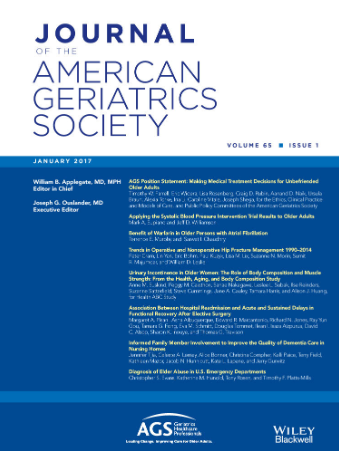Ambulatory Care Sensitive Hospitalizations and Disparities Among Older Adults With Dementia Before and During the Pandemic
Abstract
Background
Older adults with Alzheimer's disease and related dementias (ADRD) are frequently hospitalized with ambulatory care-sensitive conditions (ACSCs). Disparities in ACSC hospitalizations have been documented, but the impact of the COVID-19 pandemic on ACSC hospitalizations and disparities of older adults with ADRD is unclear, particularly, across different racial, ethnic, and socioeconomic groups. This study examined changes in ACSC hospitalizations among community-dwelling older adults with ADRD before and during the pandemic and how these changes vary by race, ethnicity, and Medicare-Medicaid dual eligibility status.
Methods
This observational study linked Medicare data with publicly available sources. The study sample included Medicare fee-for-service community-dwelling older adults aged 65 and older with ADRD in 2019 or 2021. The primary outcome was whether an individual had any ACSC hospitalizations in a given year (0/1). Secondary outcomes included any non-COVID-19-related hospitalizations and death (0/1). We used linear probability models with zip-code random effects, accounting for individual and community characteristics.
Results
The study included 2.35 million beneficiaries in 2019 and 1.85 million in 2021. Non-COVID-19-related hospitalizations decreased from 24.0% in 2019 to 20.4% in 2021, while ACSC hospitalizations fell from 23.0% to 19.0% among those who were hospitalized. In 2019, Black and Hispanic individuals had 2.0 and 1.6 percentage points higher probabilities of ACSC hospitalization (p < 0.001), respectively, compared to White individuals, and dual-eligibles had a 2.8 percentage-point higher probability than non-dual-eligibles (p < 0.001). During the pandemic, overall hospitalizations and ACSC hospitalizations decreased, with dual-eligibles experiencing an additional 2.1 percentage-point reduction in ACSC hospitalizations(p < 0.001). Meanwhile, dual-eligibles experienced a 1.5 percentage-point increase in mortality rate in 2021 compared to 2019 (p < 0.001).
Conclusion
Racial and ethnic minorities and the socioeconomically disadvantaged older adults with ADRD were more likely to experience ACSC hospitalizations compared to their counterparts before the pandemic.




 求助内容:
求助内容: 应助结果提醒方式:
应助结果提醒方式:


